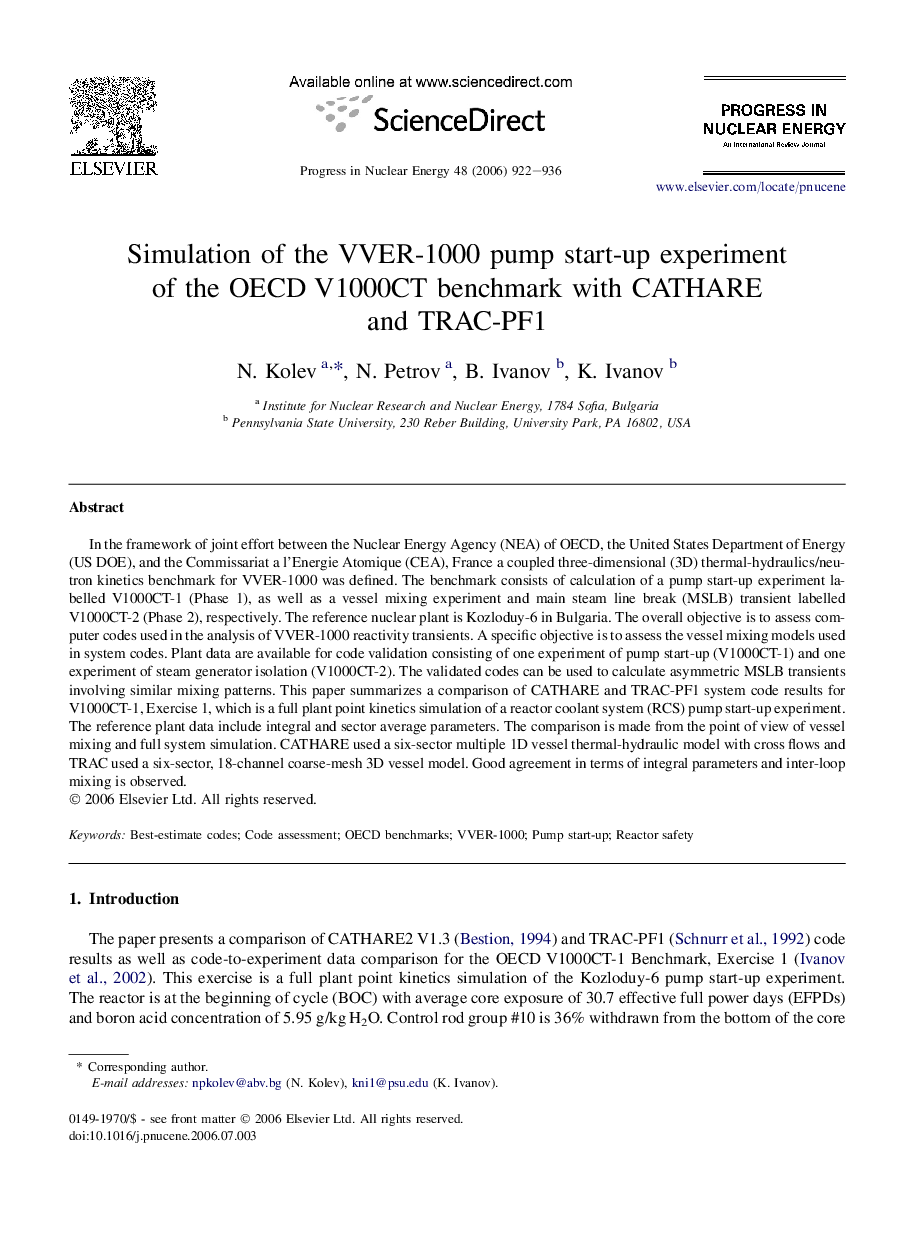| Article ID | Journal | Published Year | Pages | File Type |
|---|---|---|---|---|
| 1741512 | Progress in Nuclear Energy | 2006 | 15 Pages |
Abstract
In the framework of joint effort between the Nuclear Energy Agency (NEA) of OECD, the United States Department of Energy (US DOE), and the Commissariat a l'Energie Atomique (CEA), France a coupled three-dimensional (3D) thermal-hydraulics/neutron kinetics benchmark for VVER-1000 was defined. The benchmark consists of calculation of a pump start-up experiment labelled V1000CT-1 (Phase 1), as well as a vessel mixing experiment and main steam line break (MSLB) transient labelled V1000CT-2 (Phase 2), respectively. The reference nuclear plant is Kozloduy-6 in Bulgaria. The overall objective is to assess computer codes used in the analysis of VVER-1000 reactivity transients. A specific objective is to assess the vessel mixing models used in system codes. Plant data are available for code validation consisting of one experiment of pump start-up (V1000CT-1) and one experiment of steam generator isolation (V1000CT-2). The validated codes can be used to calculate asymmetric MSLB transients involving similar mixing patterns. This paper summarizes a comparison of CATHARE and TRAC-PF1 system code results for V1000CT-1, Exercise 1, which is a full plant point kinetics simulation of a reactor coolant system (RCS) pump start-up experiment. The reference plant data include integral and sector average parameters. The comparison is made from the point of view of vessel mixing and full system simulation. CATHARE used a six-sector multiple 1D vessel thermal-hydraulic model with cross flows and TRAC used a six-sector, 18-channel coarse-mesh 3D vessel model. Good agreement in terms of integral parameters and inter-loop mixing is observed.
Keywords
Related Topics
Physical Sciences and Engineering
Energy
Energy Engineering and Power Technology
Authors
N. Kolev, N. Petrov, B. Ivanov, K. Ivanov,
